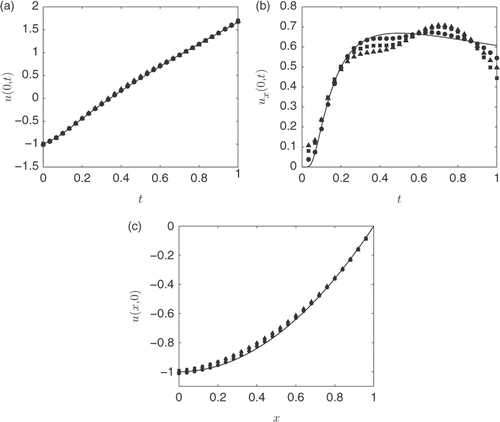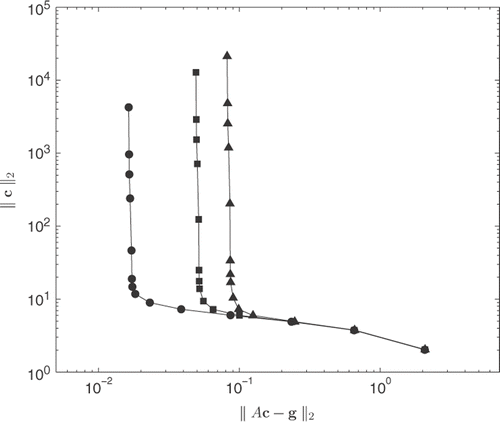Figures & data
Figure 1. General representation of the domain D and boundary Γ = ΓU ∪ ΓS, with unspecified initial and boundary conditions (·····) on ΓU, collocation points () on ΓS and source points (- - -) placed on
external to the domain D.
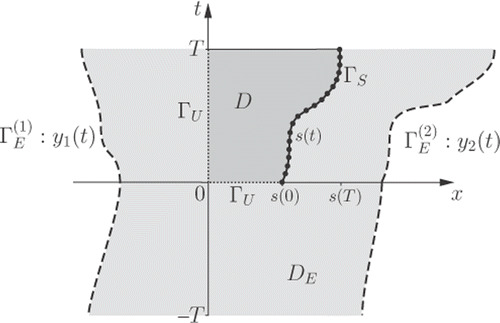
Figure 2. Particularization of for s(t) given by Equation (17) in Example 1.
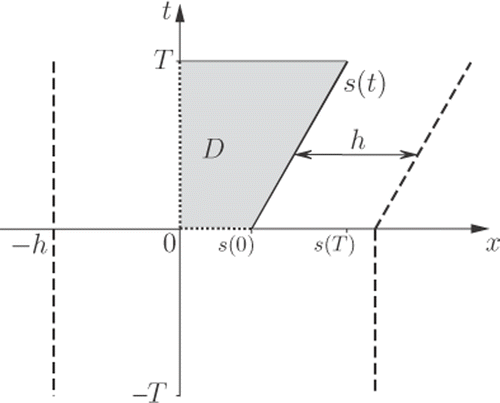
Figure 3. L-curve plots for δ = 1% (—–), δ = 3% () and δ = 5% (
) when M = 30 in (12), for Example 1.
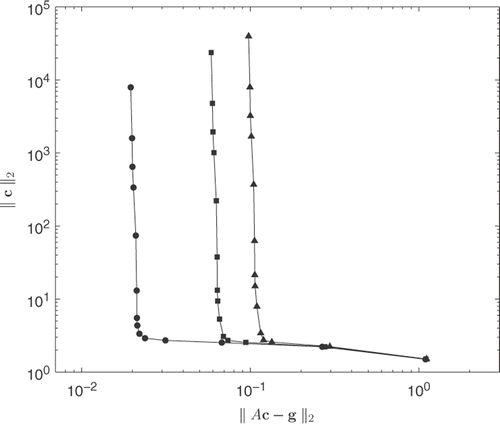
Figure 4. The exact solutions (—–) and MFS approximations for: (a) u(0, t), (b) ux(0, t) and (c) u(x, 0). All MFS approximations have been generated for noise levels δ = 1% (•) with λ = 10−6, δ = 3% (▪) with λ = 10−5 and δ = 5% (▴) with λ = 10−5, and obtained with h = 2, and M = 30, for Example 1.
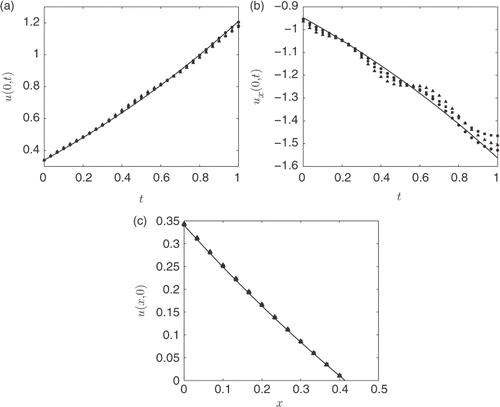
Figure 5. Plots of the exact solution (—–) and the best (*) and least (+) accurate MFS approximations from 10 different sets of noisy data with noise level δ = 5% for (a) u(0, t) and (b) u(x, 0). Both plots are obtained with h = 2, M = 30 and λ = 10−5, for Example 1.
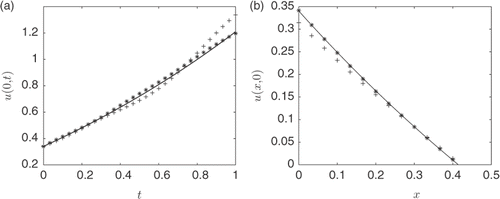
Figure 6. (a) The exact solution u(x, t) for all (x, t) ∈ D and (b) the absolute error for all (x, t) ∈ D for noise level δ = 5%, obtained with h = 2, λ = 10−5, M = 30, for Example 1.
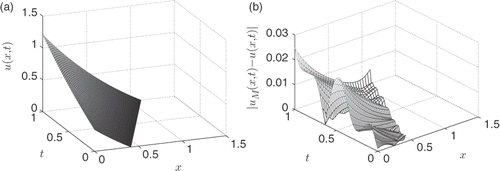
Figure 7. Plots of the absolute error for all (x, t) ∈ D for noise level δ = 5% obtained with h = 2.5, λ = 10−6 and (a) M = 30 and (b) M = 16, for Example 1.

Figure 8. Particularization of for s(t) given by Equation (25) in Example 2.

Figure 10. The exact solutions (—–) and MFS approximations for: (a) u(0, t), (b) ux(0, t) and (c) u(x, 0). All MFS approximations have been generated for noise levels δ = 1% (•) with λ = 10−6, δ = 3% (▪) with λ = 10−5 and δ = 5% (▴) with λ = 10−5, and obtained with h = 2, and M = 30, for Example 2.
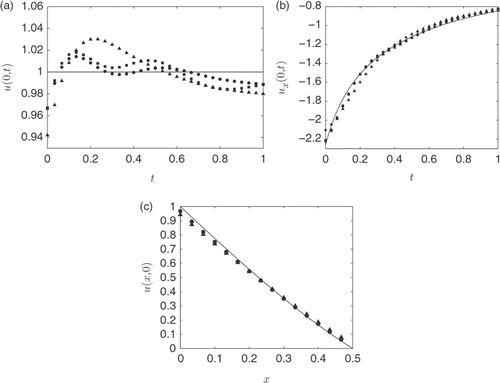
Figure 11. Plots of the exact solution (—–) and the best (*) and least (+) accurate MFS approximations from 10 different sets of noisy data with noise level δ = 5% for (a) u(0, t) and (b) u(x, 0). Both plots are obtained with h = 2, M = 30 and λ = 10−4, for Example 2.
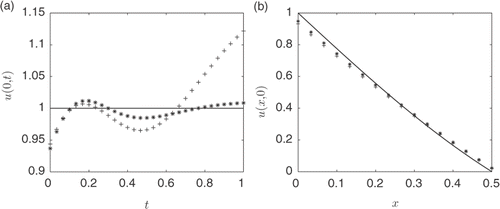
Figure 12. (a) The exact solution u(x, t) for all and (b) the absolute error for all (x, t) ∈ D for noise level δ = 5%, obtained with h = 2, λ = 10−5, M = 30, for Example 2.
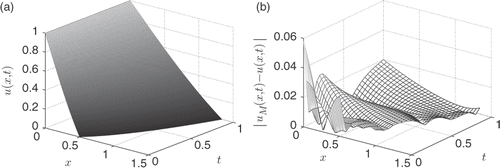
Figure 13. Particularization of for s(t) given by Equation (32) in Example 3.
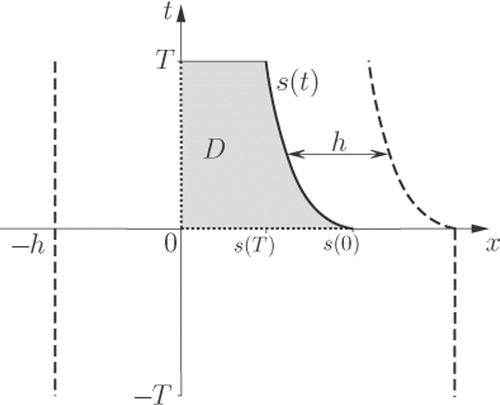
Figure 14. (a) The exact solution u(0, t) (—–) and the MFS approximation, and (b) the exact solution u(x, 0) (—–) and the MFS approximation. Both plots are obtained with λ = 10−8, h = 2 and M = 30, for Example 3.
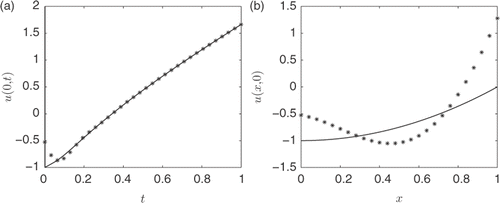
Figure 15. L-curve plots with the singularity removed for δ = 1% (), δ = 3% (
) and δ = 5% (
) when M = 30, for Example 3.
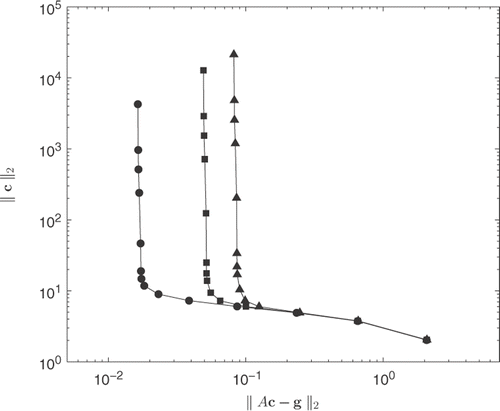
Figure 16. The exact solutions (—–) and MFS approximations with singularity removed for: (a) u(0, t), (b) ux(0, t) and (c) u(x, 0). All MFS approximations have been generated for noise levels δ = 1% (•) with λ = 10−6, δ = 3% (▪) with λ = 10−5 and δ = 5% (▴) with λ = 10−5, and obtained with h = 2, and M = 30, for Example 3.
